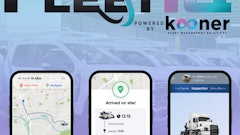
In the modern construction environment, moving away from paper forms and toward digital data capture is essential. However, with numerous form builder software solutions available, construction professionals require a strategic approach to evaluate which tools will effectively meet the demands of the jobsite. This article outlines key criteria that contractors and field operators should use to assess form builder platforms and ensure they deliver real productivity gains, reliable use in harsh environments and long-term value.
1. Fit for Field Conditions
Digital forms must perform where they’re most needed: in remote locations, with variable network connectivity and in unreliable environments. When evaluating a product, it’s essential to ask yourself these questions:
- Does the software offer offline functionality with the ability to capture data and sync when connectivity returns
- Are mobile interfaces designed for on-the-go use with large touch targets, clear prompts and minimal scrolling
- Can the forms replicate paper equivalents so crews recognize the layout and workflow
- How well does the system handle multiple device types, including tablets and smartphones
A solution that stalls with weak connectivity or forces crews into unfamiliar interfaces will result in frustration and low adoption. The best tools reflect real field usage from the start.
2. Ease of Configuration and Use
Construction teams cannot afford to wait weeks for forms to be built or updated. A strong form builder is easy to use and requires little to no IT support. Look for these features when evaluating a platform:
- A drag-and-drop interface that allows staff to create or modify forms without writing code
- Support for essential data fields like electronic Signature, photo and video capture, drop-down menus, conditional logic and automated notifications
- Template libraries for easy form creation and maintaining consistency across teams
- Real-time tracking of form usage, completion rates and error trends
When configuration is simple, teams spend their time capturing useful data instead of navigating complex software or mountains of paperwork.
3. Data Integration
Data collected in the field is only valuable if it seamlessly connects with the rest of your operations. Consider these factors:
- Can the software integrate with back office systems such as ERPs, project management tools and business intelligence platforms
- Are submissions searchable and exportable in structured formats for reporting and analysis
- Does the system include audit trails and version history to support regulatory compliance and traceability
Effective integration ensures that field data is input correctly and automatically, eliminating the need to spend hours entering and validating the data manually.
4. Data Security and Governance
Security and privacy are top of mind for many organizations, especially given the volume of personal data required by online platforms. It is more important than ever to select a platform that prioritizes data protection and governance. Here is what to look for:
- Enterprise-grade security protocols, including encryption, role-based access and two-factor authentication
- Clear, transparent terms regarding data ownership and portability
- Compliance with applicable standards, such as HIPAA, ISO, or OSHA, depending on your industry
- Administrative tools to manage user access, publishing permissions and version control
Select a provider that demonstrates a long-term commitment to protecting your data and upholding operational integrity.
5. Total Cost of Ownership and Value
Subscription costs are just the beginning of finding the correct tool. Look deeper at the total cost of ownership and potential return on investment:
- Transparent pricing models and how they scale with your usage
- Hidden costs such as configuration fees, training, or high support charges
- Tangible benefits like reduced errors, faster approvals, improved compliance and better data-driven planning
- Time savings for your team and a reduction in manual data entry or paper handling
The right tool will not only pay for itself but also drive measurable business value within the first year.
Putting Digital Forms to Work
Choosing the best form builder for construction means balancing field usability, configuration simplicity, integration capabilities, data security and overall return on investment. With these factors in mind, construction leaders can make informed decisions that streamline operations and empower teams to focus on the most critical work.




















